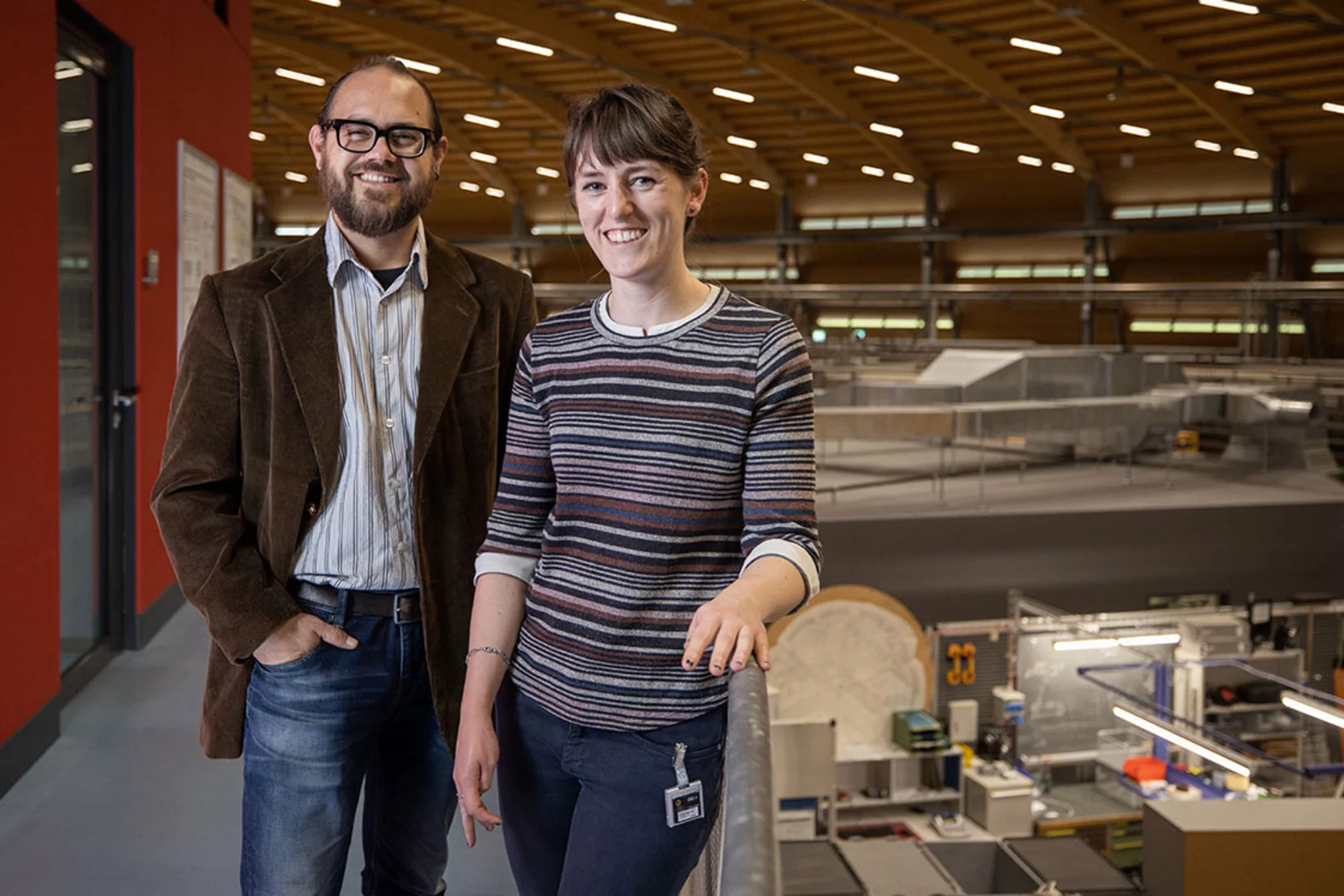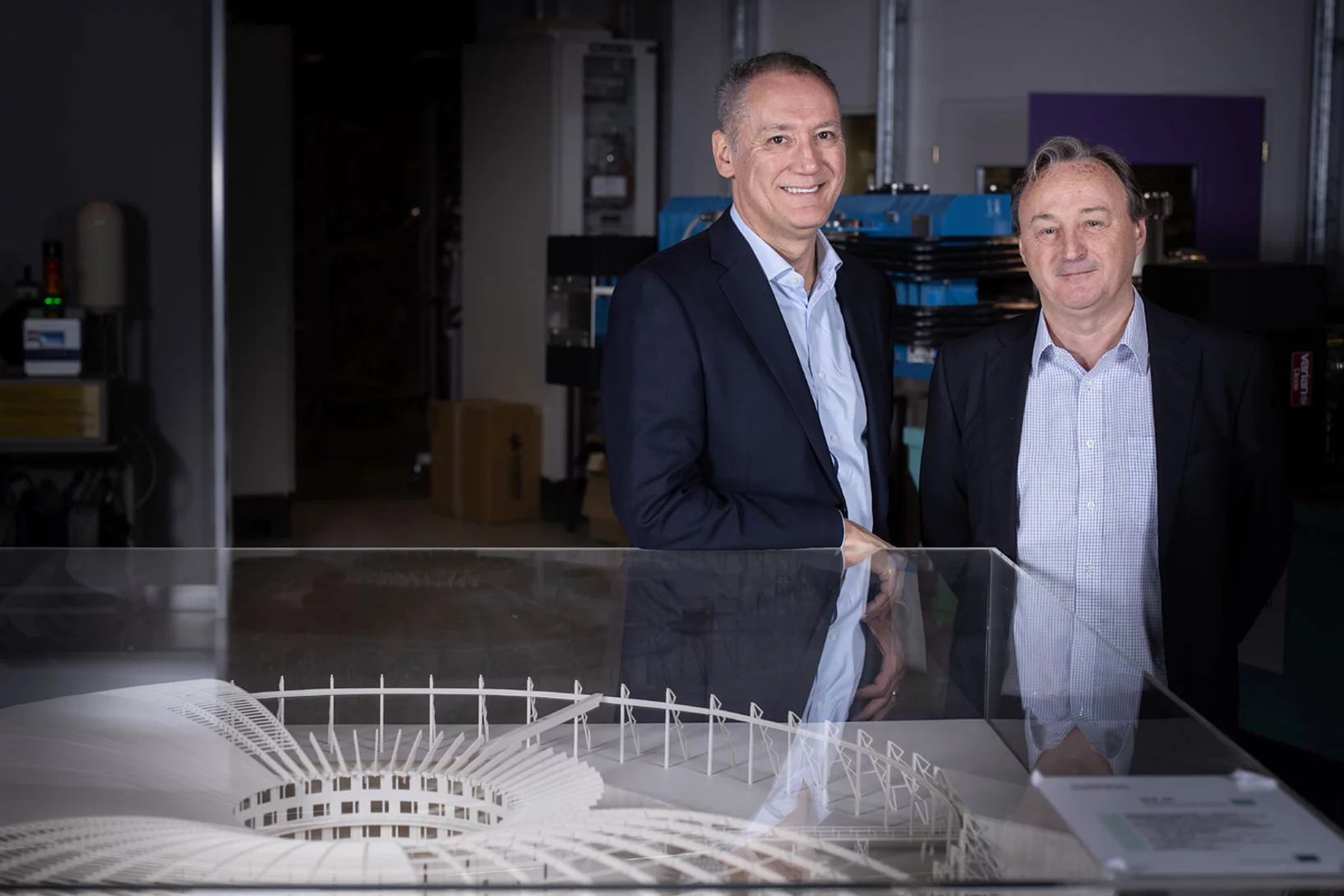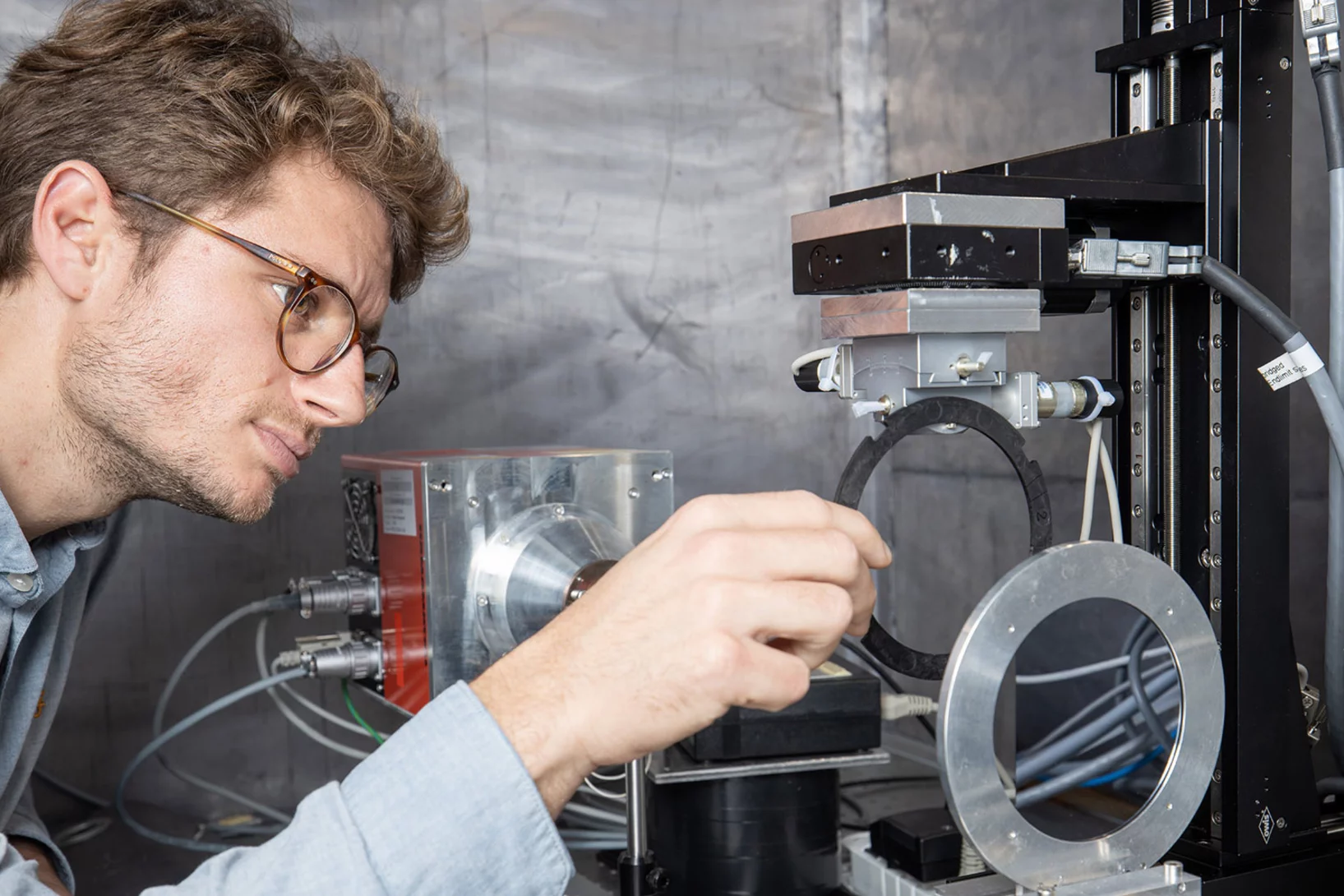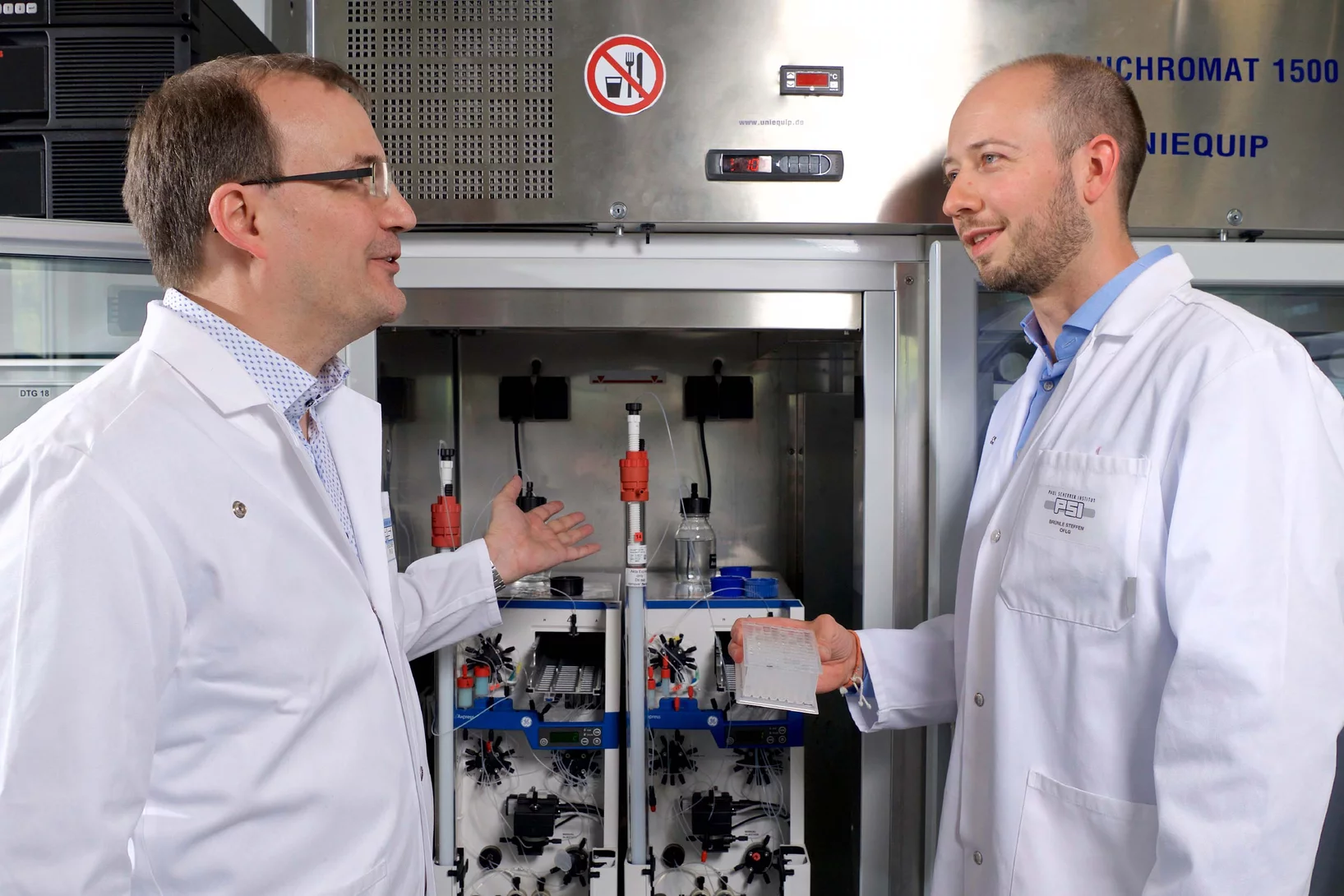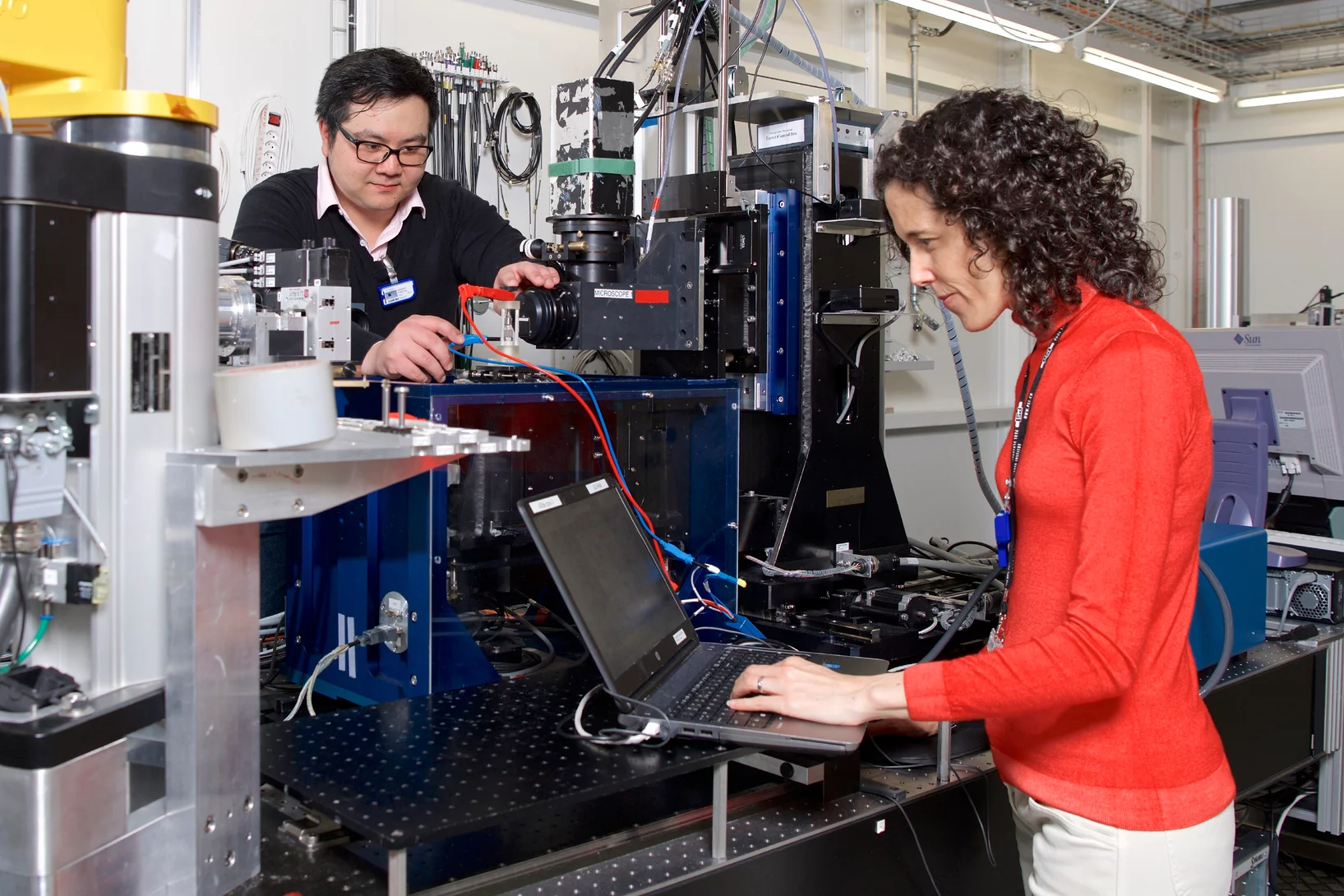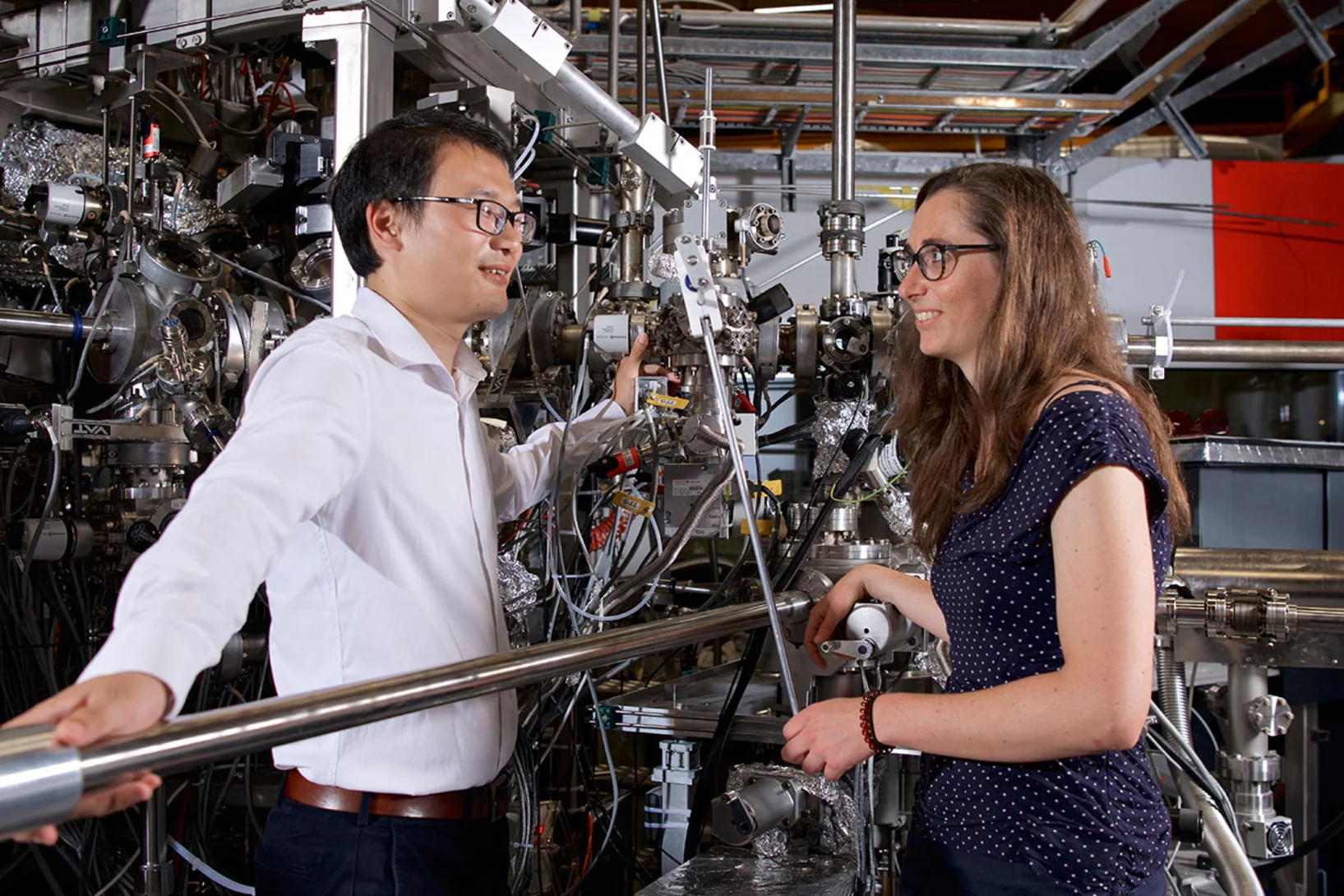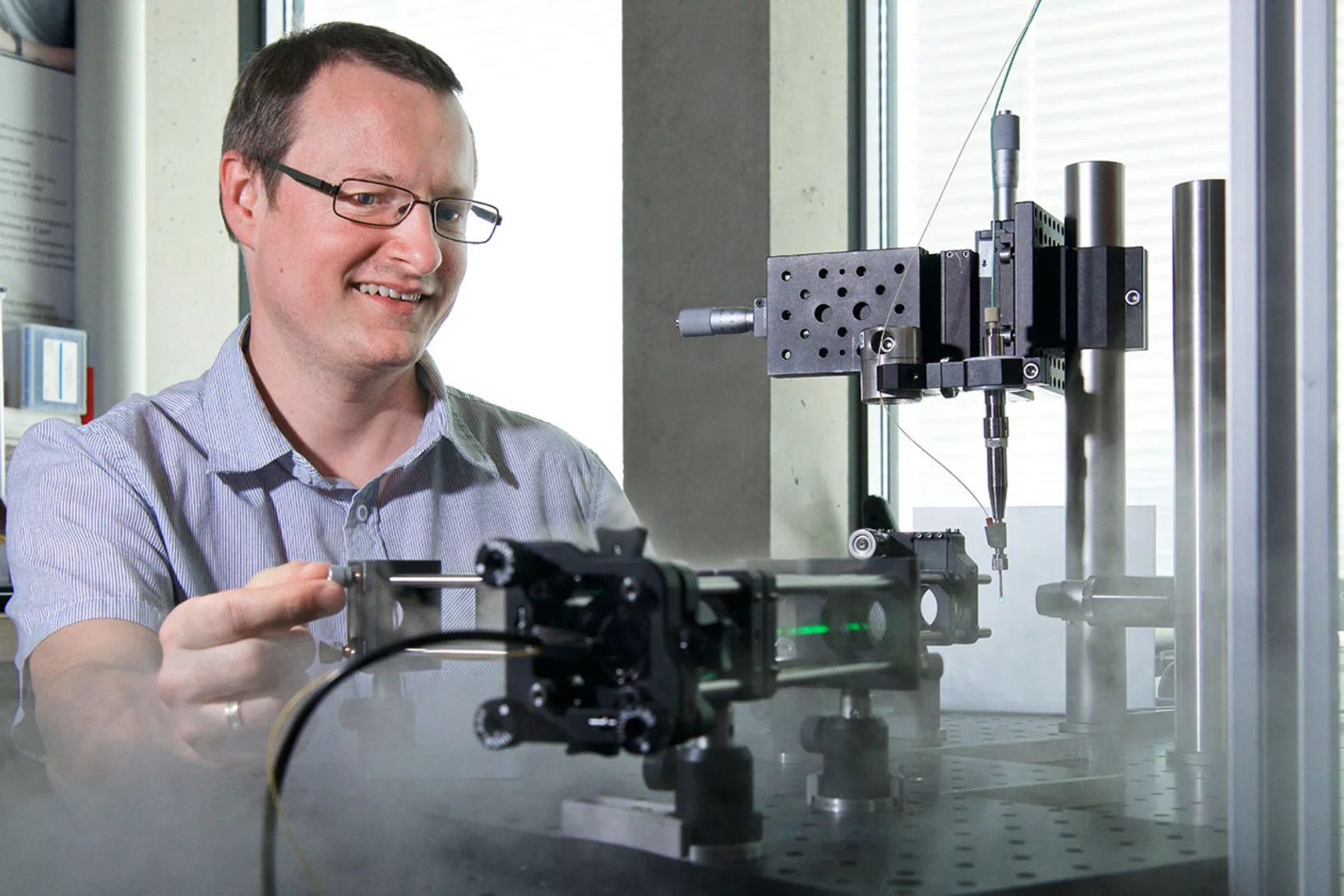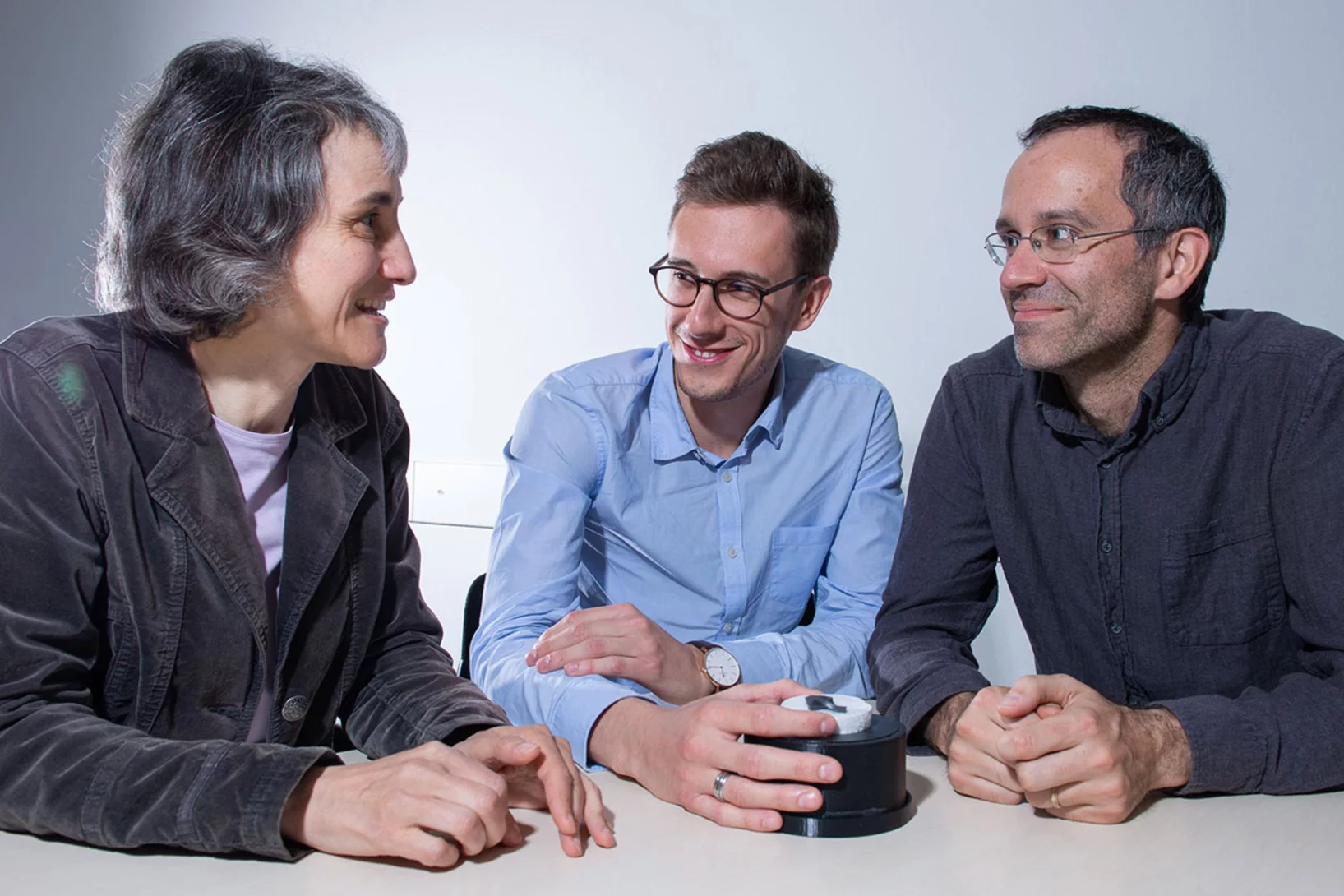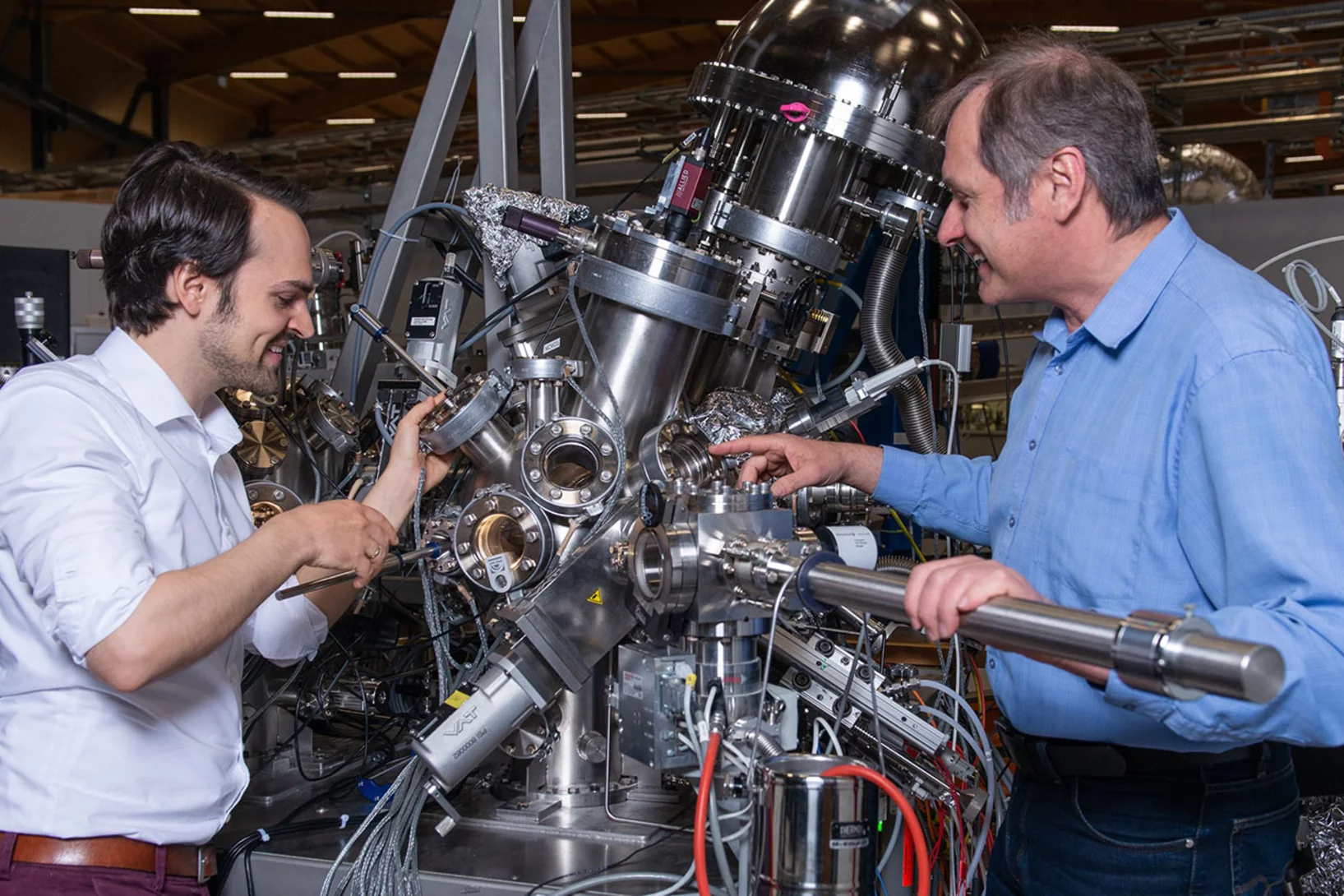SLS
Short film of a magnetic nano-vortex
Using a newly developed imaging method, researchers were able to visualise the magnetic structure inside a material with nanoscale resolution. They succeeded in creating a short "film" consisting of seven movie frames that shows, for the first time in 3D, how tiny vortices of the magnetisation deep within a material change over time.
More magnets, smoother curves: The SLS upgrade
The Swiss Light Source SLS is set to undergo an upgrade in the coming years: SLS 2.0. The renovation is made possible by the latest technologies and will create a large research facility that will meet the needs of researchers for decades to come.
A fast and precise look into fibre-reinforced composites
Researchers at the Paul Scherrer Institute PSI have developed a new process with which fibre-reinforced composite materials can be precisely X-rayed. This could help to develop better materials with novel properties.
Preventing tumour metastasis
Researchers at the Paul Scherrer Institute PSI, together with colleagues from the pharmaceutical company F. Hoffmann-La Roche AG, have taken an important step towards the development of an active substance against the metastasis of certain cancers. Using the Swiss Light Source SLS, they deciphered the structure of a receptor that plays a crucial role in the migration of cancer cells.
Observing solid-state batteries during deformation
PSI researchers have observed mechanical processes in solid-state batteries with unprecedented precision. Using X-ray tomography at the Swiss Light Source SLS, they discovered how fissures inside the batteries propagate. These insights can help to make batteries for electric cars or smartphones safer and more efficient.
Weyl fermions discovered in another class of materials
A particular variety of particles, the so-called Weyl fermions, had previously only been detected in certain non-magnetic materials. But now researchers at PSI have experimentally proved their existence for the first time in a specific paramagnetic material.
Molecular energy machine as a movie star
Using the Swiss Light Source SLS, PSI researchers have recorded a molecular energy machine in action and thus revealed how energy production at cell membranes works. For this purpose, they developed a new investigative method that could make the analysis of cellular processes significantly more effective than before.
New material with magnetic shape memory
PSI researchers have developed a material whose shape memory is activated through magnetism. Application areas for this new kind of composite material include, for example, medicine, space flight, electronics, and robotics.
New material also reveals new quasiparticles
Researchers at PSI have investigated a novel crystalline material at the Swiss Light Source SLS that exhibits electronic properties never seen before. Among other things, they were able to detect a new type of quasiparticle: so-called Rarita-Schwinger fermions.
A compass pointing West
Researchers at PSI have discovered a new phenomenon of magnetism with the help of the Swiss Light Source SLS. Certain groups of atoms behave like a compass pointing West. This could make computers much more powerful.

